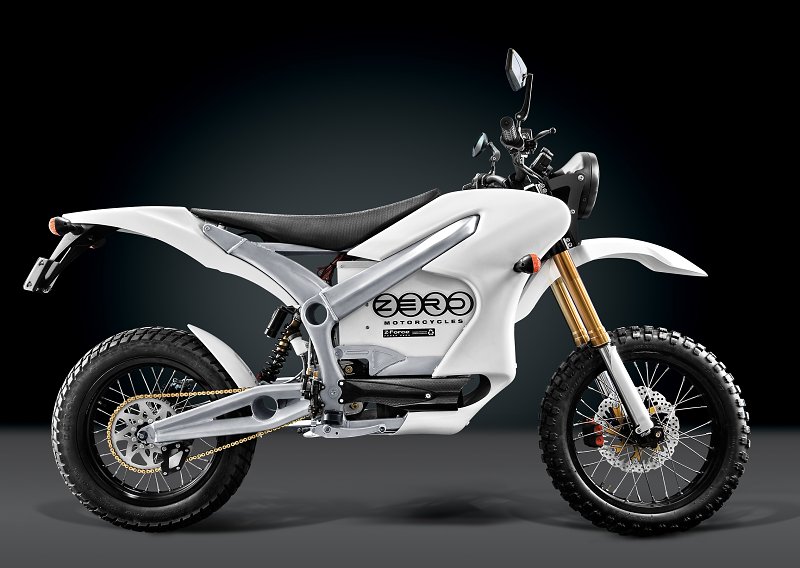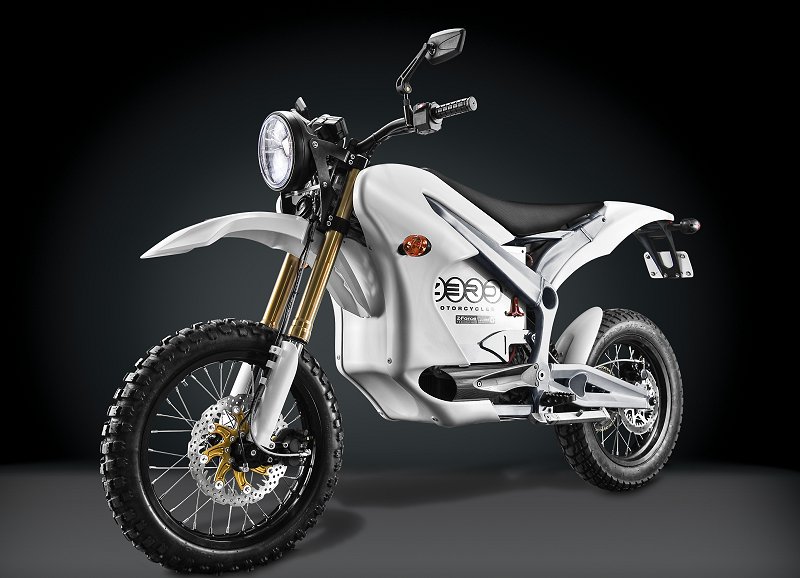
Zero Motorcycles of Santa Cruz, California announced its third model, the Zero DS, rounding out its model line with the addition of a dual-sport. The new bike, with longer-travel suspension and knobby tires, is similar to the Zero S supermoto we had a chance to ride in April, but gives Zero customers the ability to blitz fire roads, trails and other rugged terrain, as long as it’s not more than 50 miles from a 110-volt outlet.
Judging from the specs, the Zero uses the same basic frame, suspension, bodywork and other components as the S. Important differences include a simpler headlight unit (ironically much more suited to a street bike than the S’ offroad-styled plastic unit), longer-travel front suspension (rear travel stays the same at nine inches), and more dirt-oriented wheels; a 16-inch by 3-inch rear rim and 17-inch by 2.15-inch front. That front hoop may not be the best choice for off-road use, but is probably a lot better than the 16-incher on the S.
Motor and power storage stay the same. The Lithium-Ion battery pack weighs 80 pounds and sends enough juice to the permanent-magnet 12v motor to get it going up to 55 mph, fast enough to be freeway legal in California (actually, California law requires either 150cc or its horsepower equivalent. The Zero’s 31-hp motor qualifies). Charge time is less than four hours from completely flat, and the control unit’s software keeps power delivery even until the last volt is used. But it’s still not quite the range or performance of even the slowest 250cc tiddler, and I couldn’t help but notice that the top speed and range for the Zero DS and Zero S alike have been revised downward from 60 mph and 60 miles Zero claimed earlier this year to 55 mph and 50 miles. Of course, this doesn’t take into account the expected improvements to battery technology we’ll see in the next decade; continuing the rate of improvement in the last five years, we could get batteries that are 1/10th the price, while packing twice the range and power.

The Zero DS is priced the same as the Zero S: $9950, plus $500 shipping and handling to anywhere in the lower 49 U.S. states. It’s also eligible for various Federal and state tax credits and other incentives that can knock a few thousand dollars off the price. Still not price competitive (even factoring in the $2000 or so you’d save on gas riding 7000 miles a year for five years) with something like a $4999 Kawasaki KLX250, but proof that the practical electric motorcycle is somewhere closer to reality than a dream. You can find out more on the Zero website.





